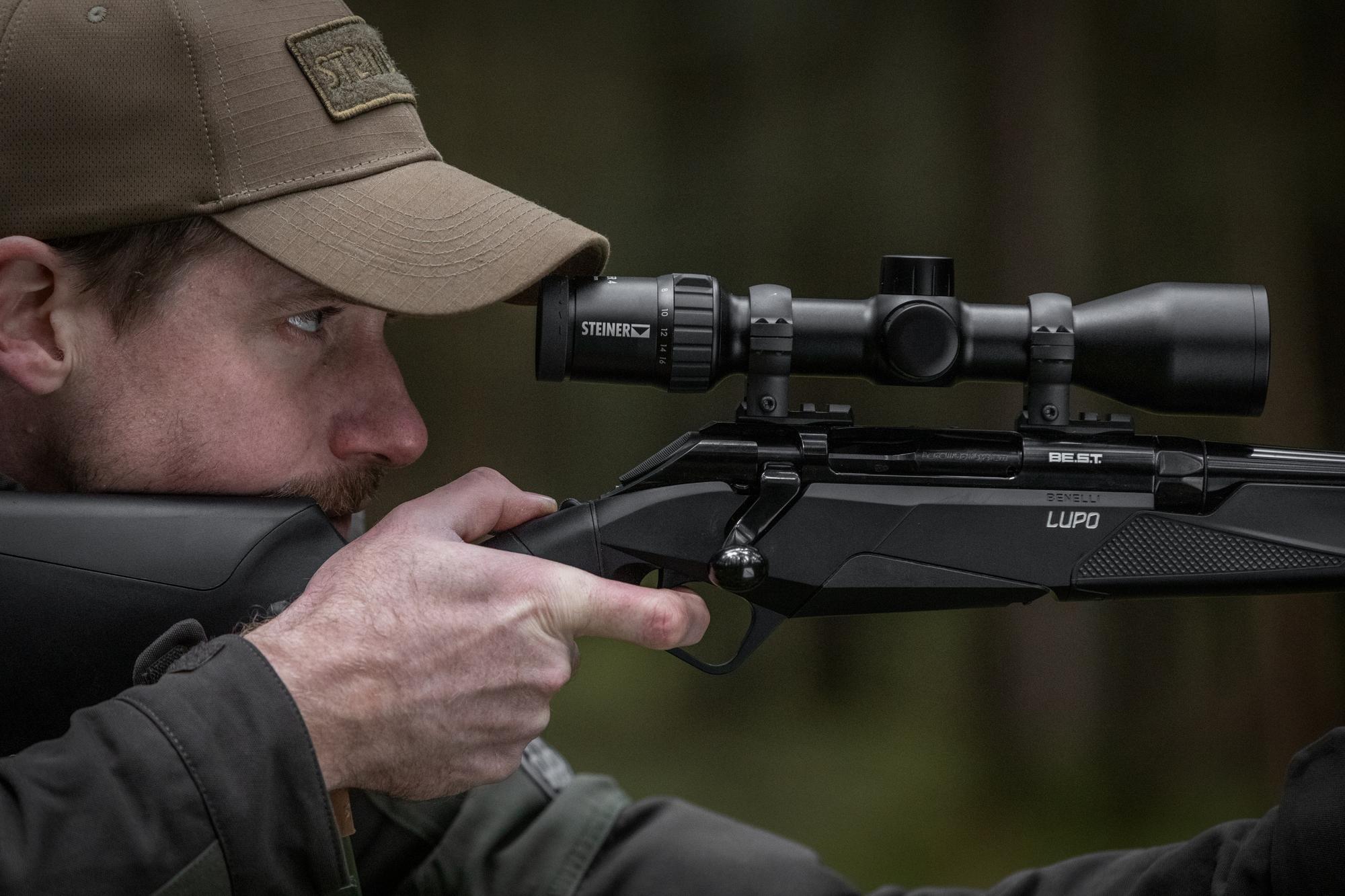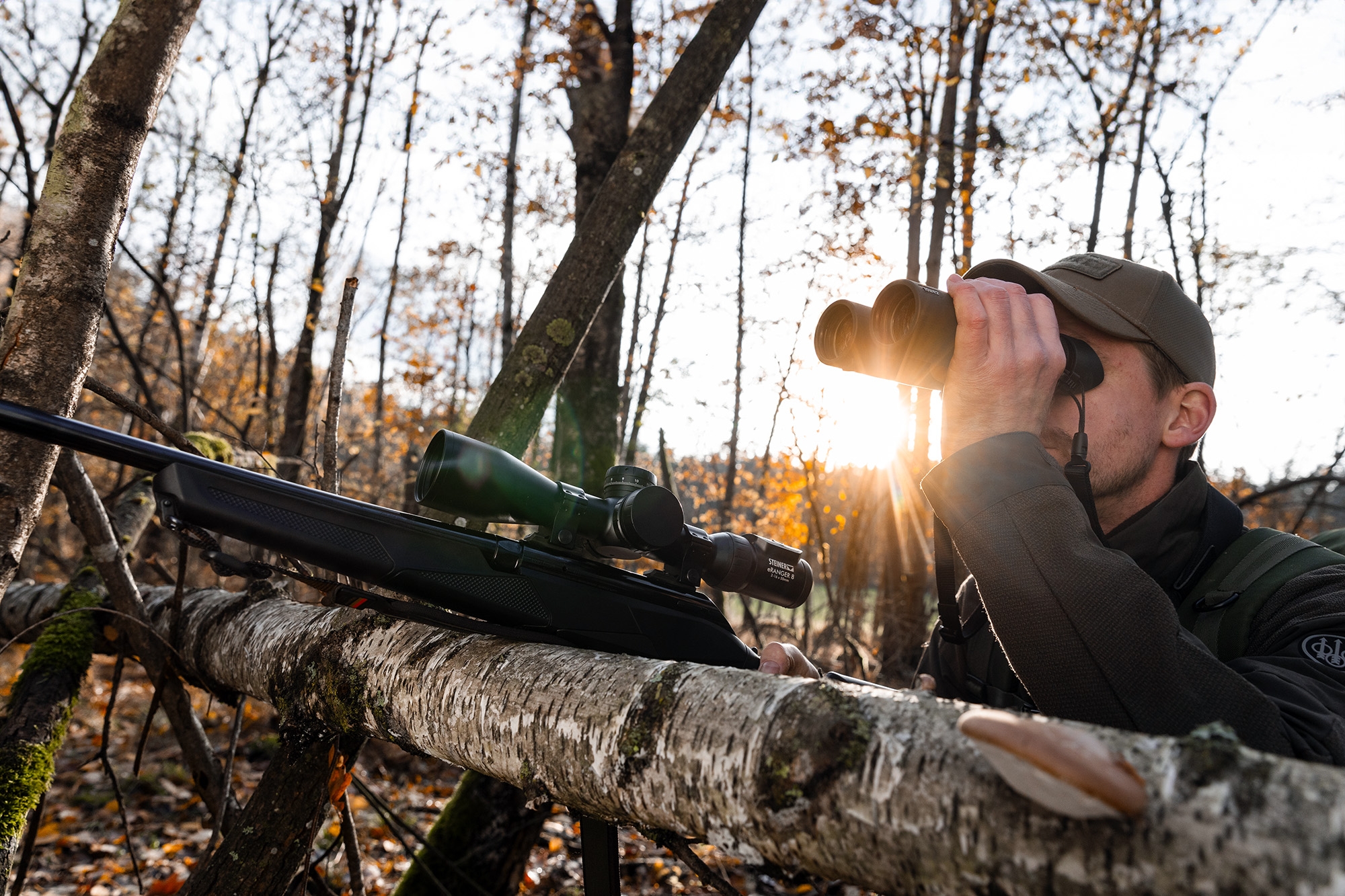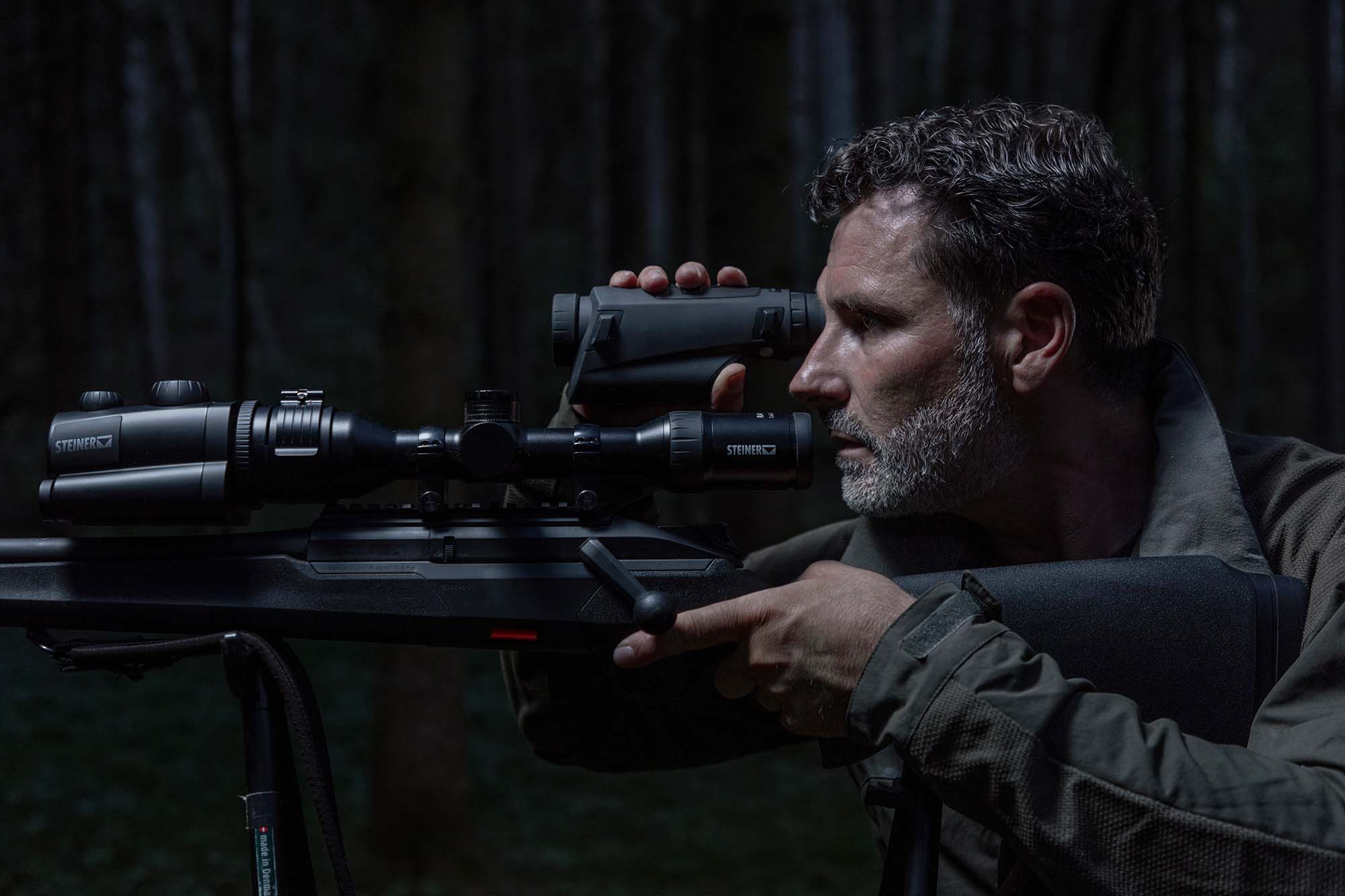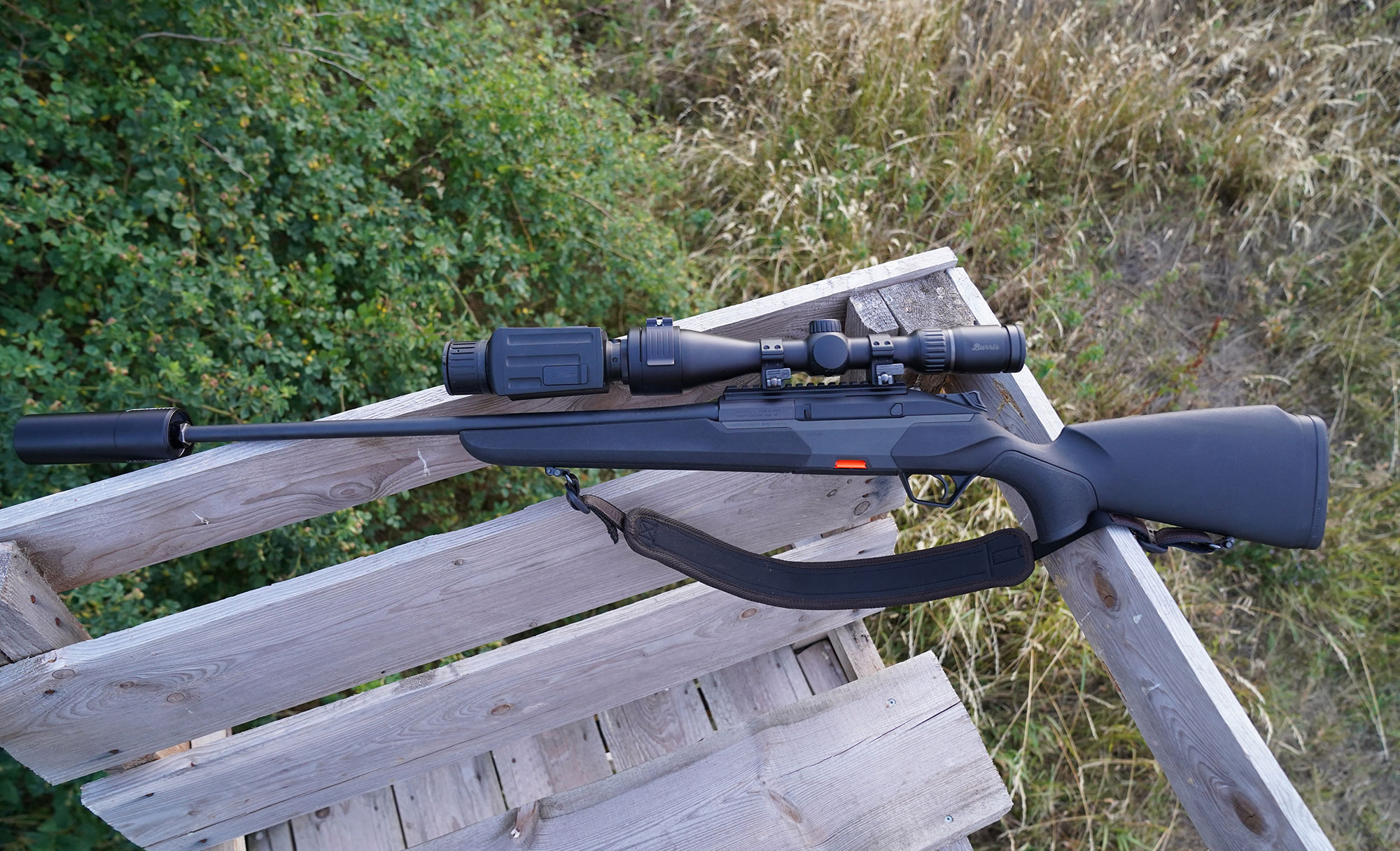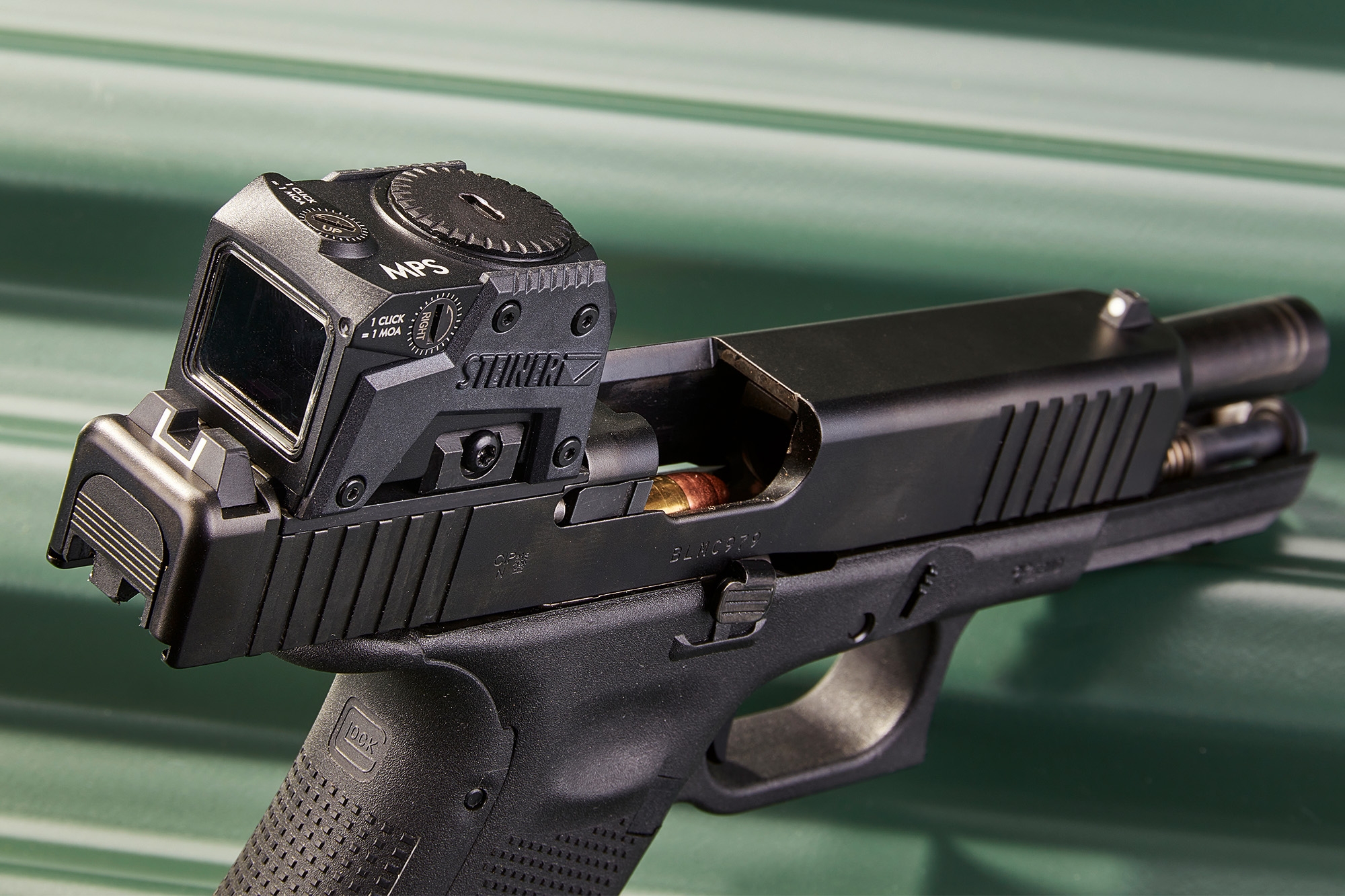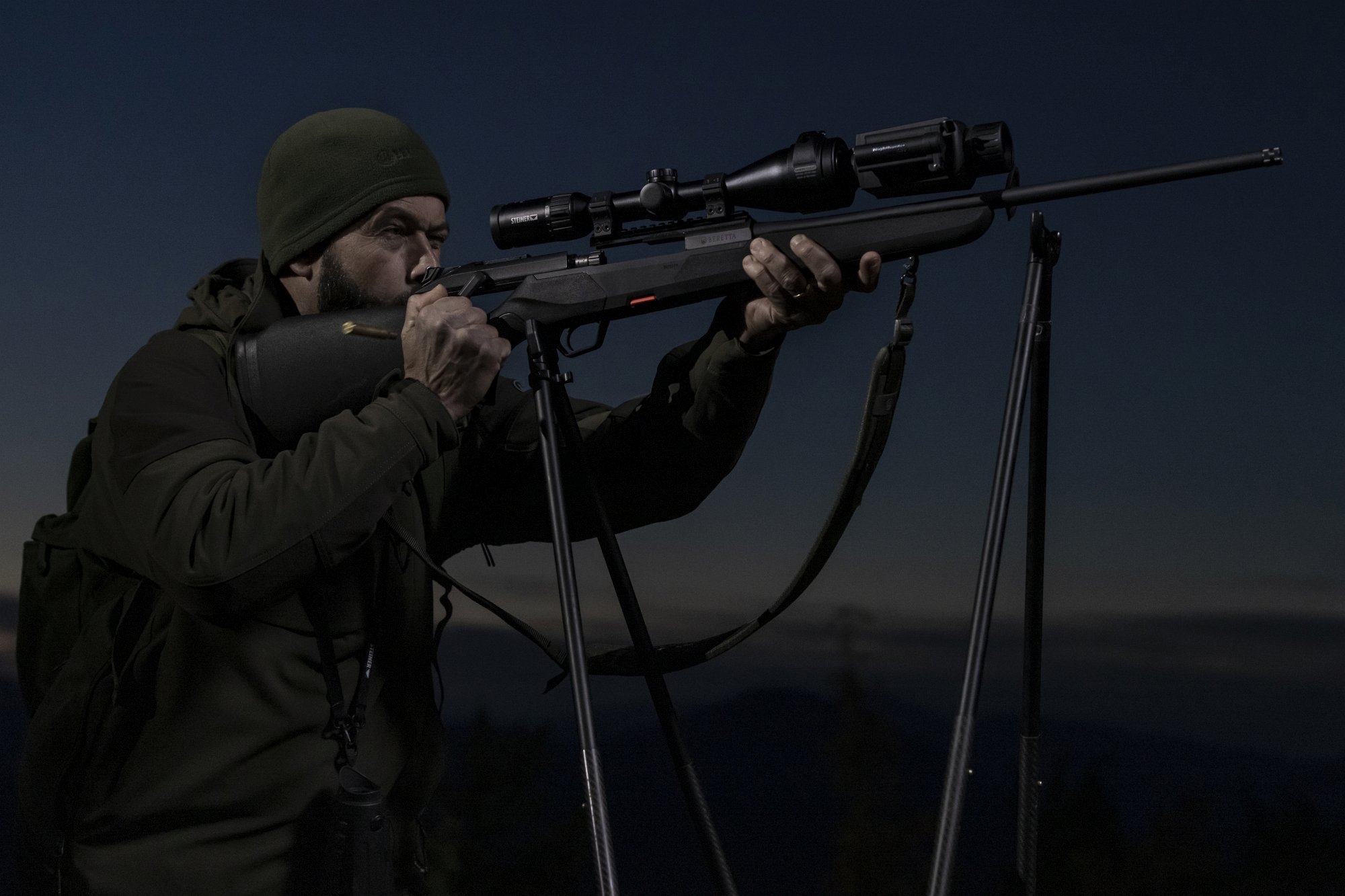Not so long ago, 1 to 6x optics with a 24-mm objective lens set the tone in terms of magnification when it came to riflescopes for driven hunting. Around 10 years ago, the first scopes with 8x zoom appeared in the low power variable optic (LPVO) segment, as high-performance variable optics with low minimum magnification are known in the tactical environment. A short time later, the first 1-8x or similar driven hunt riflescopes with an 8x zoom factor also appeared in the catalogs of renowned hunting optics manufacturers. This year, the German optics manufacturer Steiner went one better and presented a scope with 1 to 10x magnification for the hunter at the 2024 spring trade fairs, which we have subjected to a short but crisp practical check in the hunting ground for you here, and which we tested extensively in the shooting cinema during driven hunt preparation.
The new Steiner 10 1-10x24 is the first driven hunt riflescope in the premium segment to feature a genuine 10x zoom
Bright HD glass lenses with appropriate coating ensure a light transmission which, according to Steiner, is more than 92 per cent. In our test, the Steiner Ranger 10, which weighs 500 g and is just under 280 mm long, delivered a true-colour, high-contrast and sharp image right into the peripheral area. The fact that the riflescope in our test provided a clear and colour-true image for a comparatively long time even after dusk, despite the "small" 24-mm objective lens, speaks for the high brightness of the HD optics used by Steiner. The Steiner Ranger 10 1-20x24 has a field of view of 38 meters at a distance of 100 meters at the lowest – i.e. 1x magnification. At maximum magnification, the field of view is still 3.8 meters at 100 meters. The 1x magnification also allows aiming and shooting with two eyes open without any problems, so that the eye that is not behind the eyepiece can also recognise game approaching in its field of view at an early stage.
The large eyebox of the Steiner Ranger 10 also helps with rapid target acquisition – even while the rifle is being aimed. The keyword target acquisition literally brings us to the next point.
The 4-AI fiber dot reticle of the Steiner Ranger 10 1-10x24
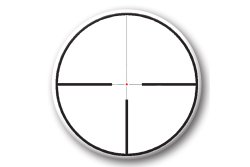
Steiner uses the 4-Ai reticle in the Ranger 10 1-10x24, a classic 4 reticle with a central crosshair in the middle, whose thin line lead into easily recognisable black bars at the 3, 9 and 6 o'clock positions. An equally fine illuminated dot can be switched on at the intersection of the lines if required. The lighting intensity is set on the left-hand turret, which also houses the battery compartment for the 3-volt CR2032 button cell.
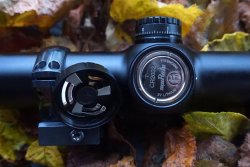
The fiber dot of the illuminated reticle can be adjusted to a total of 11 settings. The six lowest settings are designed for night use and the five highest ones for daytime use. Steiner has integrated an off-position between each level so that the hunter does not have to turn back to the zero mark each time to switch off the dot. This also makes it quicker to return to the last setting used. Thanks to a clearly perceptible and very quietly audible detent, it is very easy to find the desired position from the zero, even in the dark. In addition, the off position at the transition between the night and day settings can be felt from both directions thanks to a slightly longer turning path.
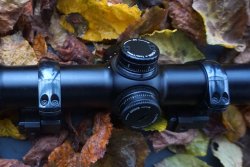
Reticle adjustment of the Steiner Ranger 10 is carried out as usual after unscrewing the protective caps with click adjustments on the elevation turret and on the right turret for windage. The maximum adjustment range is +/- 200 cm in both elevation and windage. Each click on the respective turrets shifts the reticle by 1 cm at a distance of 100 meters. The adjustment runs through 60 clicks per revolution. While the windage adjustment works without a stop, the adjustment ring on the elevation turret has a stop so that only 56 clicks can be made here (without removing the ring). Both adjustment turrets can be zeroed if required.
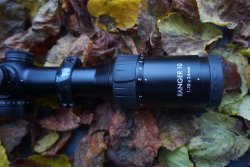
Diopter adjustment is made on the rubber-armored eyepiece and ranges from -3 to +3 diopters. The zoom ring is located directly in front of the transition cone to the main tube on the eyepiece housing. Here too, rubber armoring ensures a secure hold when adjusting the magnification. For better orientation, there is a clearly perceptible nose on this ring at the 3x magnification setting. If this marking is at the top centre of the 12 o'clock position on the eyepiece tube, then triple magnification has been reached. At minimum magnification it is at 3 o'clock and at maximum magnification at 9 o'clock. Anyone who has already thought about it knows that the ring must be turned anti-clockwise to magnify.
The Steiner Ranger 10 in the cold test (12 hours at -24 °C)
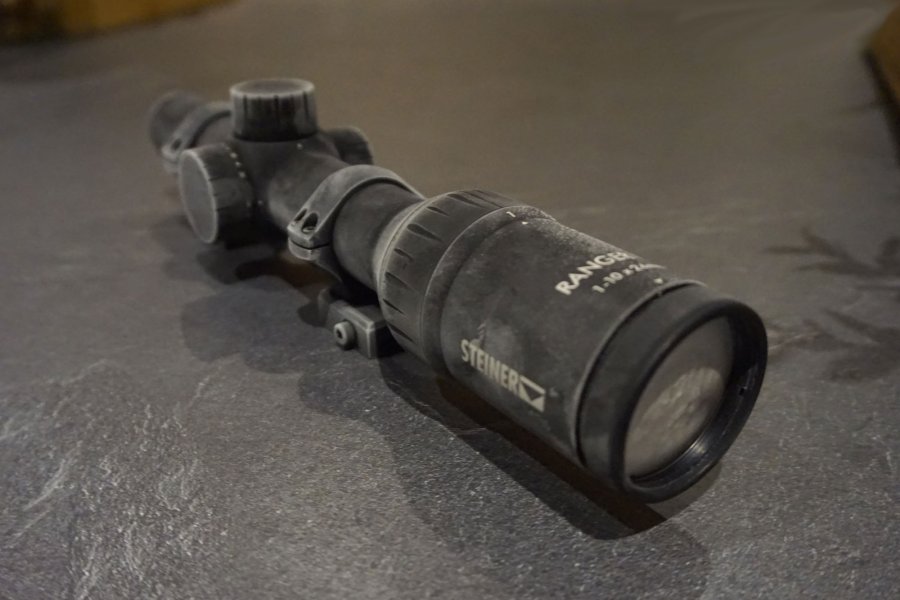
All the adjustment controls of the Steiner Ranger 10 mentioned here could also be turned perfectly and without a hitch during our cold test. For this test, the Steiner 10 was stored overnight for exactly 12 hours in the freezer at -24 °C, and the relevant adjustment rings were checked for free movement immediately after the scope came out of the "cold chamber". The nitrogen filling inside the housing prevented condensation from forming on the inside of the lenses. From the outside, the humidity was deposited as fine dew on the housing and the lenses, which then covered the entire surface with a thin layer of frost for a few minutes. Although this left a very fine film of water after thawing, the O-rings in the turret caps and in the battery compartment kept the moisture completely out.
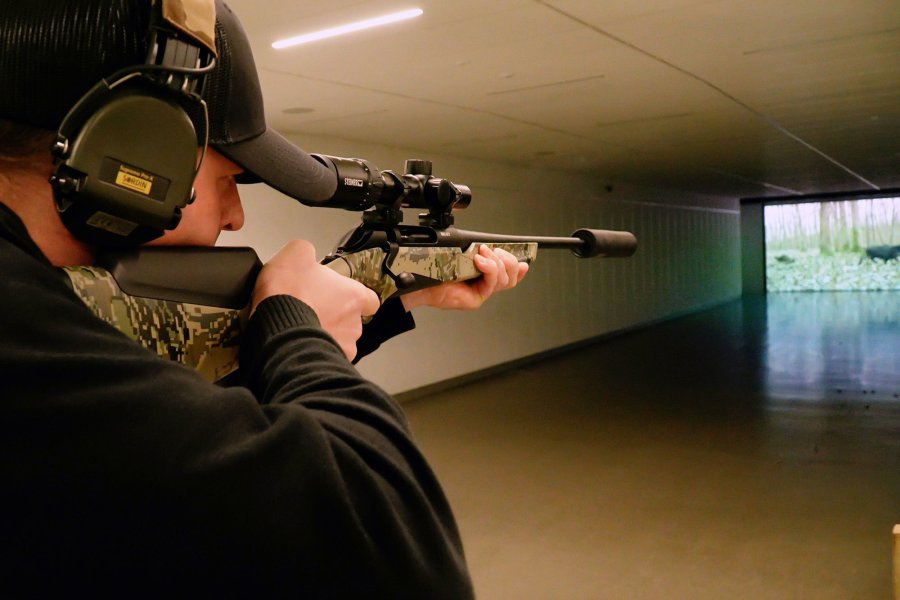
Our test glass also passed the mechanical box test to check the click adjustment without any problems. After turning the obligatory square with the elevation and windage adjustment turrets, it landed back on its starting point. The scope then had to pass the practical shooting test in the shooting cinema on a Benelli Lupo – here, too, there was nothing to criticise. As predicted by Steiner, the wild boars scurrying across the screen were quickly picked up in the optic and "virtually" brought down.
Steiner 10 1-10x24 technical specification and price – An extremely versatile hunting riflescope
Model: | Ranger 10 1-10x24 |
Lens Diameter: | 24 mm |
Exit Pupil: | 6.5 - 2.4 mm |
Magnification: | 1-10 x |
Eye Relief: | 93 mm |
Main Tube Diameter: | 30 mm |
Field of View at 100 m: | 38 - 3.8 m |
Reticle: | 4-AI fiber dot in the 2nd focal plane |
Adjustment Range: | Elevation +/- 200 cm, windage +/- 200 cm |
Adjustment per Click: | 1 cm / 100 m |
Parallax Free: | From 100 m |
Diopter Compensation: | -3 to +3 dpt |
Reticle Illumination: | 11 settings (6 night / 5 day), automatic switch-off after 6 hours |
Battery Type: | CR2032 button cell 3V |
Length: | 279.5 mm |
Weight: | 500 g |
Price (RRP): | 2,499 euro |
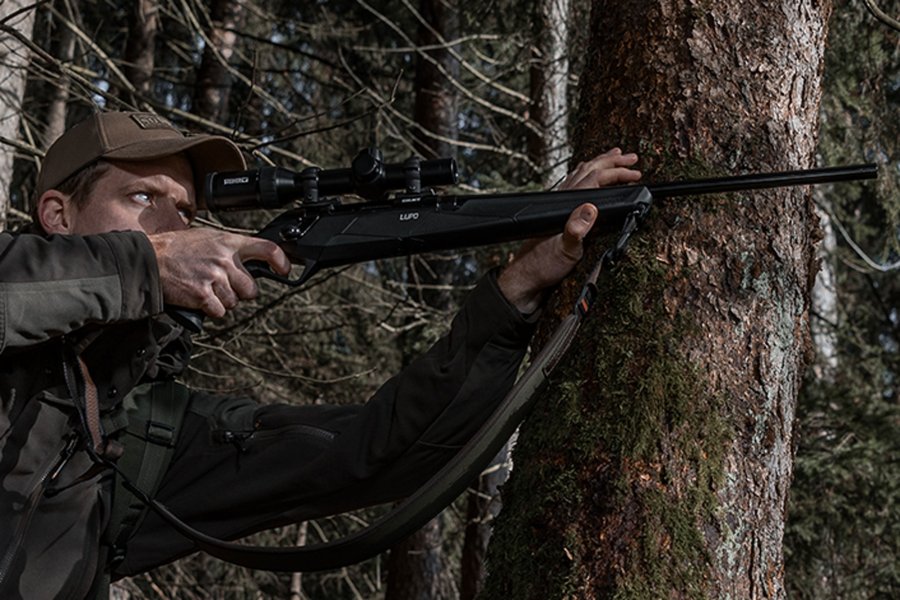
Steiner 10 1-10x24: our test conclusion on the new pioneer of flexible close and medium range riflescopes in the premium class
With the Steiner Ranger 10 1-10x24, Steiner has now also reserved one of the top spots in the premium field for driven hunt riflescopes with 10x zoom. The true 10x magnification and a wide field of view of 38 m at 100 m predestine the Ranger 10 as a riflescope for shooting at short and medium ranges. Its HD optics ensure bright, true-colour and high-contrast images with high edge-to-edge sharpness and the sufficiently large eyebox means that you can take aim particularly quickly on driven hunts and acquire your target at lightning speed. The magnification of up to 10x also allows the hunter to clearly identify distant game and take a safe shot at it – provided, of course, that he/she has the appropriate shooting skills and the right caliber rifle. This magnification also allows it to be used as a stalking scope to which, thanks to its short design, thermal imaging attachments (e.g. the Steiner C35) can also be attached if required. Last but not least, the Steiner Ranger 10 1-10x24 with its 30-mm main tube diameter is ideal for all dynamic shooting situations in the close and medium range up to beyond the 200 m mark and should also find its fans among sports shooters competing in this range, such as IPSC rifle shooters.
In conclusion, the first 10x magnification in the premium range makes the new Steiner Ranger 10 one of the most versatile riflescopes on the market. Thanks to the high flexibility of the Ranger 10, you are ideally equipped in every situation, especially when targets appear quickly at different distances.
More information about the Steiner Ranger 10 can also be found on the manufacturer's product website.



